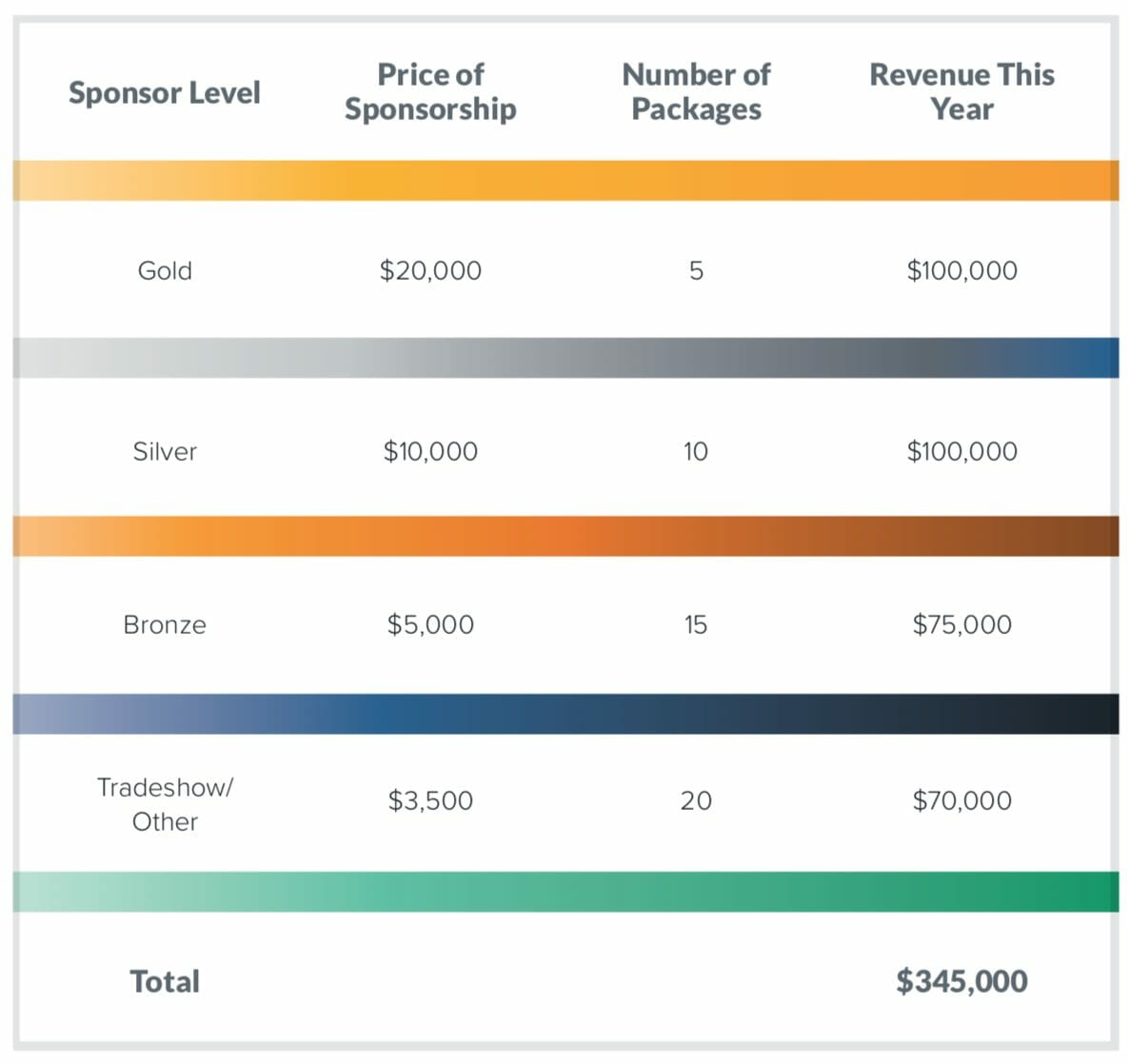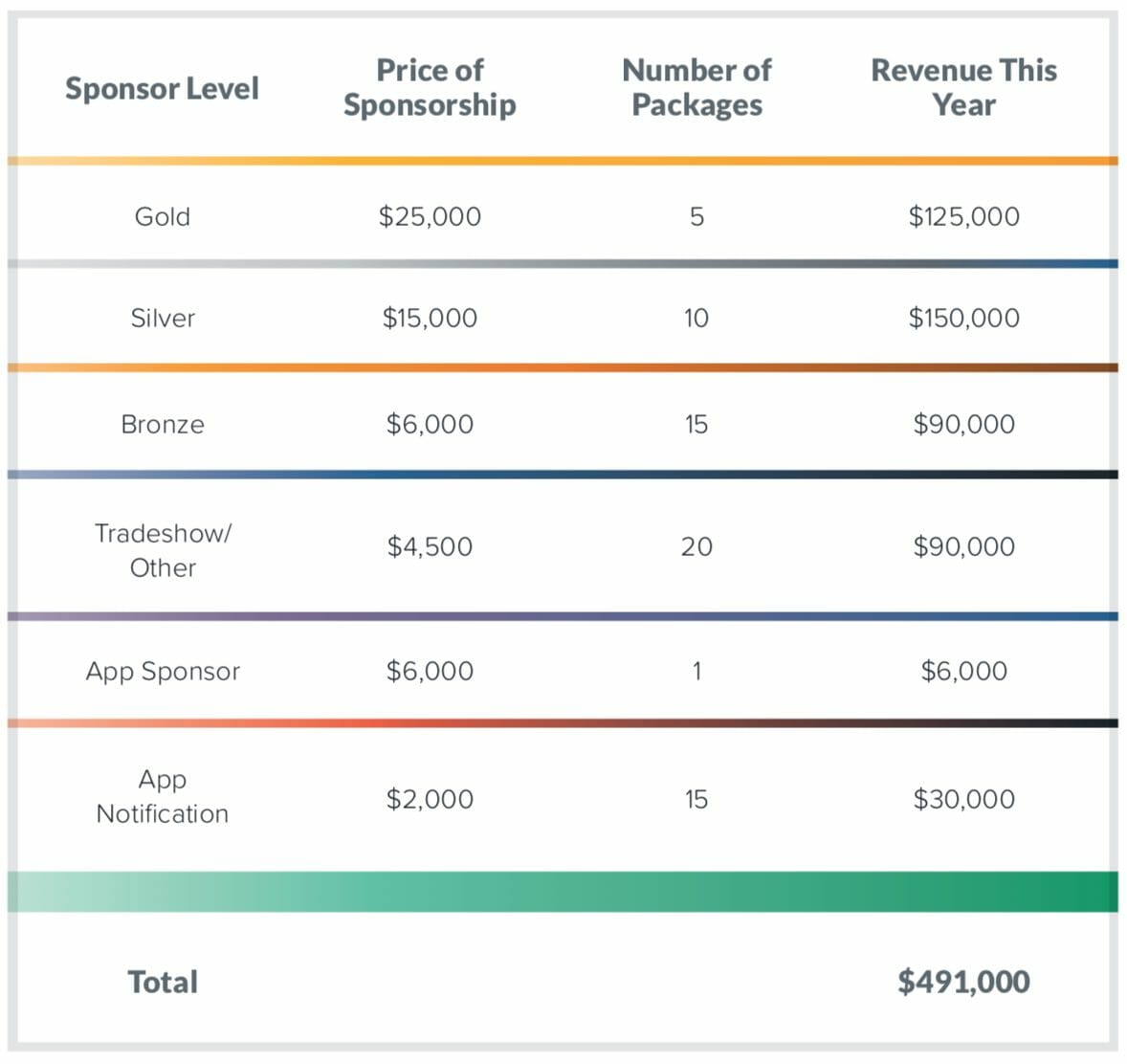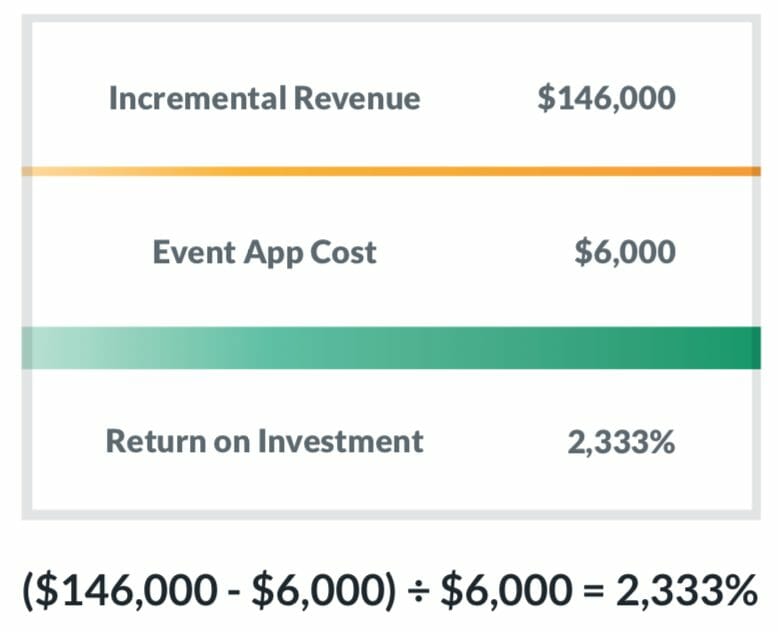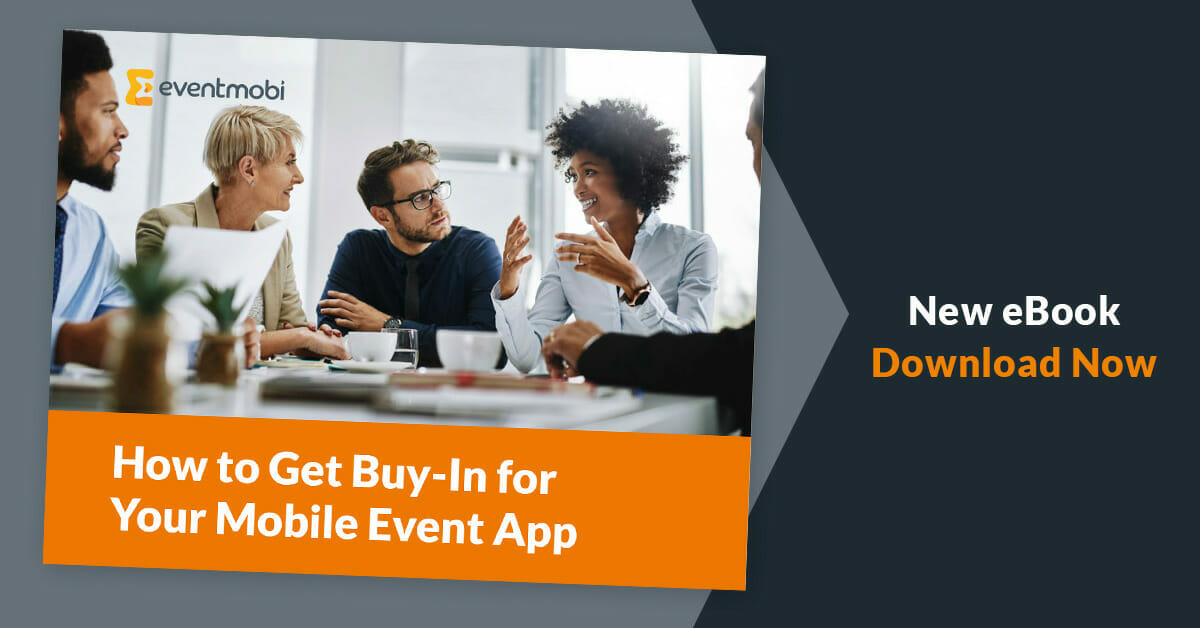How to Get Executive Buy-in for an Event App
The goal of this blog post is to help you create a compelling business case that will get you buy-in and approval for using an event app.
At this point, you should already be familiar with the benefits of incorporating an event app into your event. But, just to give you a refresher, here’s a quick list of pros that you can use in your business case when trying to get buy-in from key stakeholders:
- Drastically reduces the cost of paper by eliminating printed programs, feedback surveys, and signage
- Generates additional event revenue through digital sponsorship opportunities (e.g. digital banner ads in the event app)
- Increases attendee engagement with other attendees, sponsors, and session content before, during, and after your event
- Improves on-site attendee communications using push notifications and in-app reminders
- Helps guide attendees throughout the event space with session information
- and maps that can be updated in real-time
- Boosts networking opportunities with gamification and leaderboards
- Makes it easier to collect session and overall event feedback by issuing surveys directly through the event app during and right after each session
- Improves event branding by increasing the number of touchpoints attendees have with your brand
- Improves the overall event experience to attract and retain attendees and sponsors
To secure the funding for an event app, you’re going to need a comprehensive and focused presentation tailored to the audience for whom you’re trying to get buy-in.
Preparing Your Pitch
Focus on the Audience
If you’re going to read any part of this guide with thoroughness, make sure it’s this section. The most important part of putting together a pitch is knowing and catering to what your audience cares about. Typically, decision makers for technology purchases include any of the following stakeholders in an organization:
- CFO / VP of Finance
- CMO / VP of Marketing/Events
- CTO / VP of IT
- CEO / Board
We’re going to focus on each of these roles individually and identify the best way to get buy-in from each of them. The ultimate goal is to convince them of the benefits an event app offers to the success of the event, and ultimately approve budget for the investment.
CFO / VP of Finance
Your finance stakeholder is going to be mostly concerned about three things:
- Incremental Revenue
The additional revenue that will be attributed to the event if they approve the purchase - Return on Investment
What is the return if the event app investment is made? - Cost Savings
If the technology can replace or mitigate some of the budgeted costs of the event
Incremental Revenue
Providing actual examples of the costs associated with an event app is essential. We’re going to illustrate a few ways in how you can showcase this information. Just make sure you use real data from your organization so that it resonates with the VP of Finance and describes a real case scenario.
In this example, the focus is on incremental revenue coming from new sponsorship opportunities.
Current Sponsorship Revenue
The table above is an example of what your current nancial modelling may look like with your existing sponsorship program.
Now, suppose you’re able to add additional sponsorship value by providing advertising and promotional opportunities in the event app. In the table on the right hand side, we’ve included increased prices for all the sponsorship levels because of the value-add options available with an event app.
Sponsorship Revenue with an Event App
We also added in options to sponsor the entire event app, and the ability for sponsors to promote themselves through push noti cations.
Note: If you allow sponsored notifications, make sure to not fatigue your attendees with too many messages as it will most likely result in them turning off their app notifications.
With all the value-adds, you can see right away that you make an additional $146,000. This makes a pretty compelling case.
Return on Investment
Once you have your incremental revenue, as well as the predetermined spend on your event app, it’s easy to create a simple calculation for ROI.
Here’s what the formula looks like:
ROI Example
Cost Savings
In addition to the ROI presentation, you can create an even more compelling case with a simple detailing of the other savings that can be achieved by using an event app.
Usually, the first thing people think of when it comes to cost savings is the elimination of printing costs for the paper event program.
Savings on printing costs can definitely be huge, but that’s not the only area where you’ll be able to save!
Other printed materials you can eliminate include:
- Paper event programs and guides
- Printed surveys
- Printed signage
- Session documentation and presentations
Cost Savings Table
Furthermore, an event app has the potential to replace a number of commonly used event tools. Talk to various event technology providers to con rm what can and can’t be done with their respective event apps. This will ensure you’re able to capture all of the potential cost savings.
Some of the common tools many event planners use that can be replaced with an event app include:
- Live Polling and Q&A during sessions and presentations
- Session and event surveys
- Live digital signage
- Calendar booking
When presenting to the VP Finance, your slide needs to drive home the fact that by using an event
app, you’ll actually be making money rather than just spending it. The overall ROI gained by the organization is worth the investment.
CMO / VP of Marketing / Events
The VP of Marketing or Events is going to be most motivated by seeing how the event app contributes to achieving the overall goals of the event. Make sure you speci cally focus on how the event app will help achieve those goals, in addition to any of the cost savings and ROI information.
Common event goals include:
- Attendee Engagement
- Education & Learning
- Networking & Community Building
- Event / Organizational Branding
- Attendee / Delegate Retention
- Revenue
We’re going to break down each goal into further detail. These points can be used in your presentation to highlight how an event app can help achieve your organization’s specific event goals.
Attendee Engagement
A convincing way to position the potential of an event app for engaging attendees is to break it down according to the features that support engagement.
For example, event app adoption can be maximized before your event by promoting
it through your marketing communications. You can even tie an incentive to download the event app prior to the start of your event by providing exclusive information or early bird access to sessions or speakers.
You can then use the event app to engage attendees and get them excited leading
up to your event by messaging them and encouraging them to participate in group discussions and message other attendees. This is a good way to show your stakeholder how engagement can be supported throughout the event lifecycle.
Event Planner ProTip:
Scheduling messages pre, during and post event also drives down cancellation rates and encourages sign up for next year’s event
Education & Learning
The connection between an event app and the goal of education and learning can sometimes be easily overlooked. So, it’s critical that you explicitly call out and explain the connection during your presentation to stakeholders. Don’t make them guess or assume how the two elements connect.
An event app supports education and learning in the following ways:
- Quizzes can be used to evaluate content comprehension and retention by incorporating them into your event app gami cation strategy, where points are awarded for correct answers
- Live polling during sessions can test the knowledge of the audience, as well as provide guidance to the speaker on what aspects of their presentation needs more explanation or focus
- Surveys can be sent from the event app to test knowledge from individual sessions and rate the overall event
- A Document Library available within the event app can be used to store presentations or documents of many types, enabling easy access and reference for attendees before, during, and after sessions. Attendees can also take advantage of note-taking capabilities within the app.
Networking & Community Building
Showcasing attendee, speaker, and sponsor pro les in the event app is a good way to start the conversation about how networking and community building are supported by an event app.
Here are some examples that you can highlight in your presentation if this is a key event goal you’re looking to achieve:
- Attendees are able to search for pro les and send one-to-one messages directly through the event app
- Attendees can book appointments with one another through the event app, and the appointments show up in their app schedules
- Group discussions can be created on particular topics or themes to encourage conversation and connection
- Gamification challenges can be used to foster networking by printing codes on attendee badges and getting people to interact with one another and share their codes
Event / Organizational Branding
By far, the best way to showcase how your brand can be promoted through an event app is to create a mock image for your presentation with a customized home screen. An image says a thousand words! Here are some ideas to inspire you in creating your own branded home screen. If you already have a vendor selected, reach out to them and ask for a mock up so that you can demo the event app during your presentation.
Attendee / Delegate Retention
If your marketing / events stakeholder has retention as an event goal, many of the previous points already made help to support this. An event app improves the overall event experience because of its interactivity, functionality, and ease of use. All of these qualities help improve renewal and loyalty.
One of the supporting strategies you can use to ensure you’re delivering the expected quality of event experiences is to launch surveys during the event. That ongoing feedback and insight will highlight any potential blind spots that you can proactively address.
Additionally, you can leverage the event app on an ongoing basis throughout the year by opening up registration for your next event at a discounted price. For example, if you launched a post-event survey that asked “Will you attend next year?”, you can provide them with a link to register for the next event right away.
Event Planner ProTip:
Offering a “risk free” registration (e.g. no charge for cancelling within 90 days) right after your event nishes allows you to secure a commitment from attendees for the following year while their excitement is still running high.
You might have a higher cancellation rate for that cohort of registrations, but it’s a great tactic to get higher overall retention rates.
Revenue
It’s important to keep coming back to costs throughout your presentation so that your marketing or events stakeholder can justify the budget if they need any additional approvals. You can use the data that was provided in the VP Finance example to showcase this.
CTO / VP of IT
If the VP or Head of Information Technology is part of the decision-making team, you’ll want to make sure you have
a slide or two with a technical focus. If you’re anticipating working with an event app vendor, ask them for technical specifications. Here are a few bullet points you can focus on that cover security, ease of use, and integrations.
App Security and Compliance
• Passwords required for login
• Provide features for GDPR compliance
• Security Assessment (Cloud Security Alliance or similar)
No Code or IT Support Required
• Con guration and customization managed by the event team • Technical support available by vendor during entire event
• Onsite support provided by vendor on request
Integration with Existing Systems
• Open REST API
• Plug-and-play integrations with major providers
• Integration services available if resources are an issue
CEO / Board
If you’re presenting to the most senior person in your organization or a board, they will be concerned about higher level considerations. Think about what is most important to them and create messaging that addresses those concerns.
Additional Tips
Once you’ve gathered your numbers and thought about how to present a compelling case to get buy-in from each key stakeholder, it’s then time to focus on the actual delivery of your presentation. We’ve developed a comprehensive eGuide that will take you through how to put together and present your business case, and how to answer the most commonly asked questions raised when purchasing new technology.






